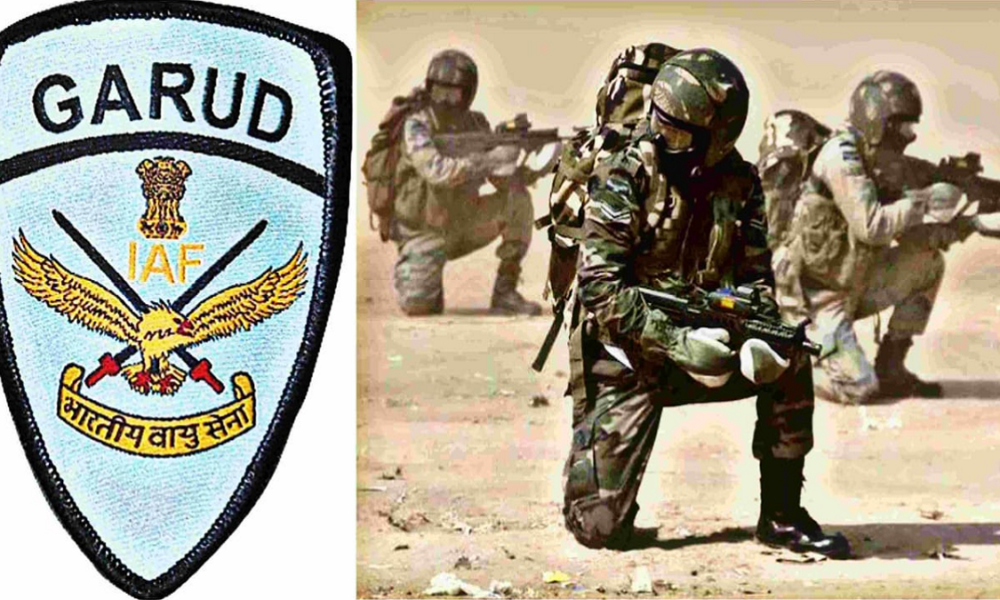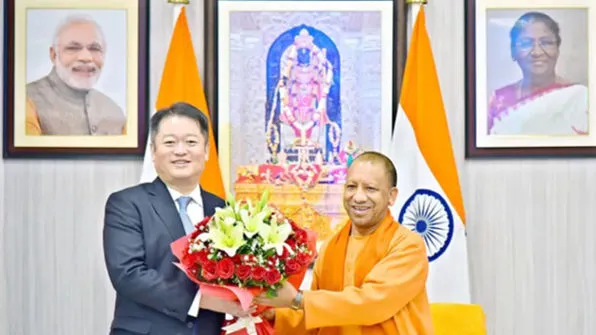The Indian Navy calls them the MarCos (Marine Commandos), the Indian Army has named them as the Para SF (Paratrooper Special Forces), likewise the IAF too has an arm of Special Forces and have aptly named them Garuds. The Garuds are the youngest of the martial special forces in the subcontinent and if their honour board is to be believed, are one of the finest trained soldiers the country has. In the short time since their inception, they have brought admirable laurels to the IAF, thanks to their varied training regimen. The success of initial 15 flights of the Garuds in their roles allotted, have led the IAF to increase their count by 10 more flights, no mean task, as the rejection rate during the ab-initio training of a Garud commando is in excess of 50% — half of those who volunteer don’t make the grade for further training.
The Garuds don’t have a cadre, not as yet. This effectively means the volunteers for this arm are drawn from the vacancies of the existing branches of the IAF, true for both officers as well as the men they lead. Some direct recruitment of men has recently started to boost the induction rate. Raised in 2004, at the last count, there were close to 1500 of these elite commandos.
What do they do?
Initially conceived with the name “Tiger Force” they were supposed to be in charge of base security complementing the existing setup of IAF police and DSC (Defence Security Corps), but as training progressed IAF found new usage for these initial bunch of people who were surpassing every set goal. Thus, the puny base defence force, transformed into a cutting edge offensive arm and was rechristened as the Garuds. Concurrently the roles of the force expanded to form themselves into two distinct categories – peacetime roles and wartime roles. In the former the roles were base defence, disaster relief, defence of installations during hostile environment and terrorism, tackling hostage situation with room intervention capabilities and anti hijacking – the last is in conjunction with the NSG, anti hijacking being one of their main role
During war the actual mettle of the Garuds come into play. Roles here are wide and across the spectrum and mostly offensive rather than defensive. With the commencement of hostilities one of the first role the Garud would be required to accomplish is Destruction of Enemy Air Defence (DEAD), here a small element of these commandos would be inserted into the enemy territory with the expectation of blowing up a forward early warning radar to provide own fighters a clear funnel to push in, in layman parlance this would be “Radar Busting”. They are also trained to achieve a high degree of effectiveness in Combat Control, wherein, they guide friendly fighters towards enemy target, very much like a Forward air Controller, and also laser designate targets for precision ammunition delivery. This role in particular is one of its most effective. A group of men in enemy territory, living off the land, go around covertly guiding and laser designating targets for fighters and quietly vanish post mission. Other wartime roles include the role of airfield takeover. Here a party of commandos is expected to infiltrate a small enemy forward base, take over key installations and make troops land in quick time to complete the full takeover of the base. A much debated and outrageous move often practised by the IAF during exercises. A more traditional role for the Garuds is the Combat Search and Rescue (CSAR), in this case the Garuds orchestrate the rescue of a downed pilot in enemy land, aka- “Behind Enemy Lines”. Within their own territory the Garuds are trained to handle attacks on base and sanitise areas in the base containing major assets. The IAF has also been known to have used Garuds to precisely pick out and neutralise infiltrators inside bases, with guidance from airborne command posts.
How do they operate?
The majority of the world’s special forces operate on the principal of STIE (Small Team Insertion and Extraction); the Garuds, too, follow the same principle operating in small units called a “Squad” — a self sustaining fighting unit capable of operating behind the enemy lines for almost 72 hours. A squad generally has all elements required for a mission and is further broken up into specialised tracks of six or four as per objectives. During peacetime the Garud Flights, consisting of approx 50 combatants, practice their specialised role as per their operational area – mountain, sea, desert, etc, — and pre allotted targets. Training is often interspersed with peacetime missions like disaster relief and Counter Insurgency (COIN) operations.
The accolades
Over the short span of its existence, the Garud Force has won admirable accolades and gained substantial recognition in the international arena. One Ashok Chakra, the country’s highest in peace time, four Shaurya Chakras and quite a few Vayu Sena Medals later, the Garuds also boast of participation in J&K, shoulder to shoulder with the Army. They have been part of various international exercises where the flow of praise for their persistence and innovation has been pretty liberal. In a field where success is counted in number of kills, the Garuds do have a few to boast and the country would not be doing justice if their contributions during natural calamities are not taken note of. During most of the biannual firepower demonstrations of the IAF, Garuds have been constantly vying for the spectators attention pitching manoeuvres for manoeuvres with the fighters. Such has been their aura, it wouldn’t be wrong to say that the ‘poster boy of IAF’ image of the fighter pilot is now in danger of change, from the Garuds.
A.R. Giri is a veteran of the IAF who retired as a Wing Commander. An erstwhile fighter pilot who has flown the MiG 27 and MiG 21 aircraft has served the IAF for 24 years. He has also been a Ministry of Defence PRO based in Delhi before retirement. At present, the Wing Commander flies for commercial airlines and writes on defence related matters in his spare time.














